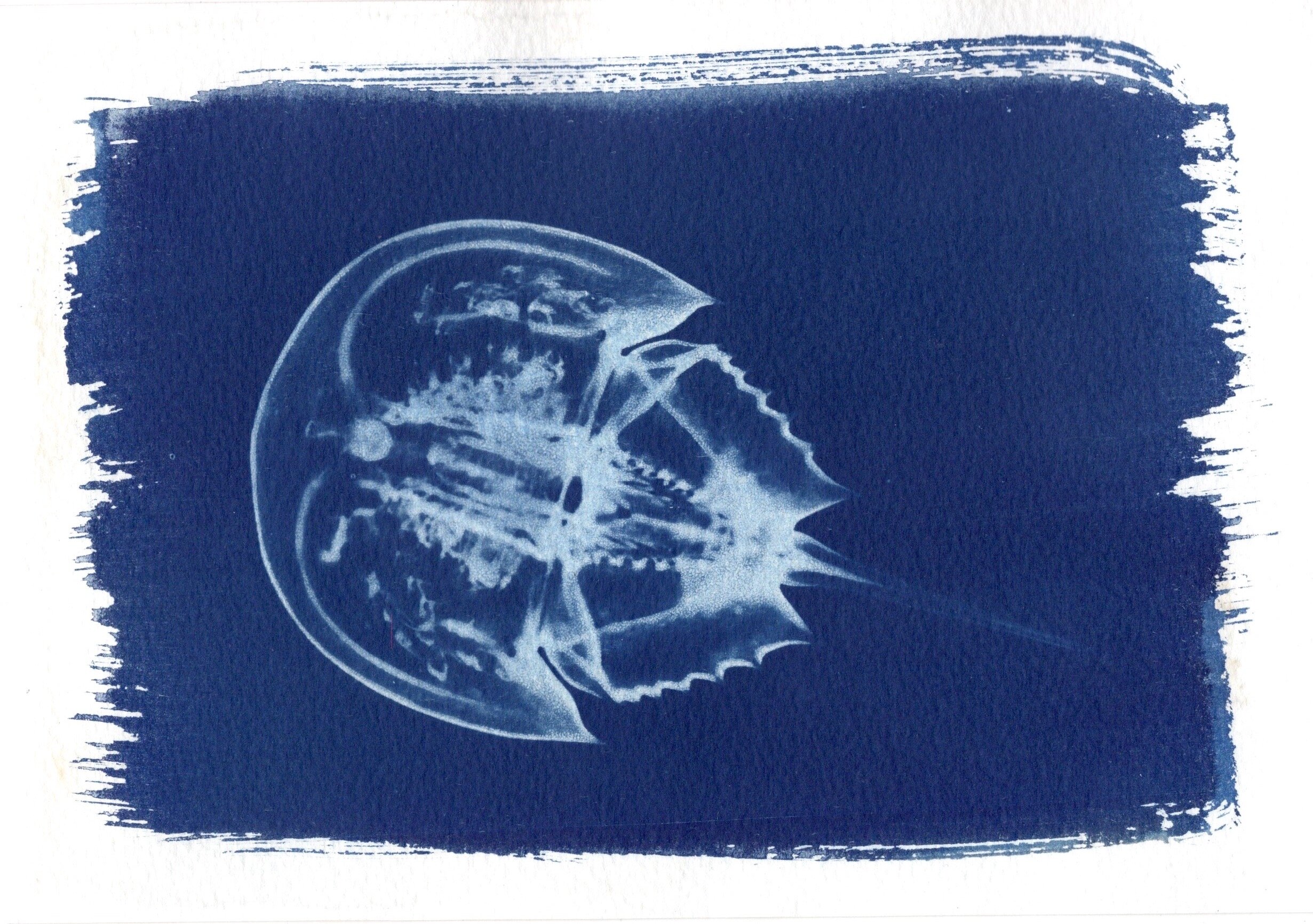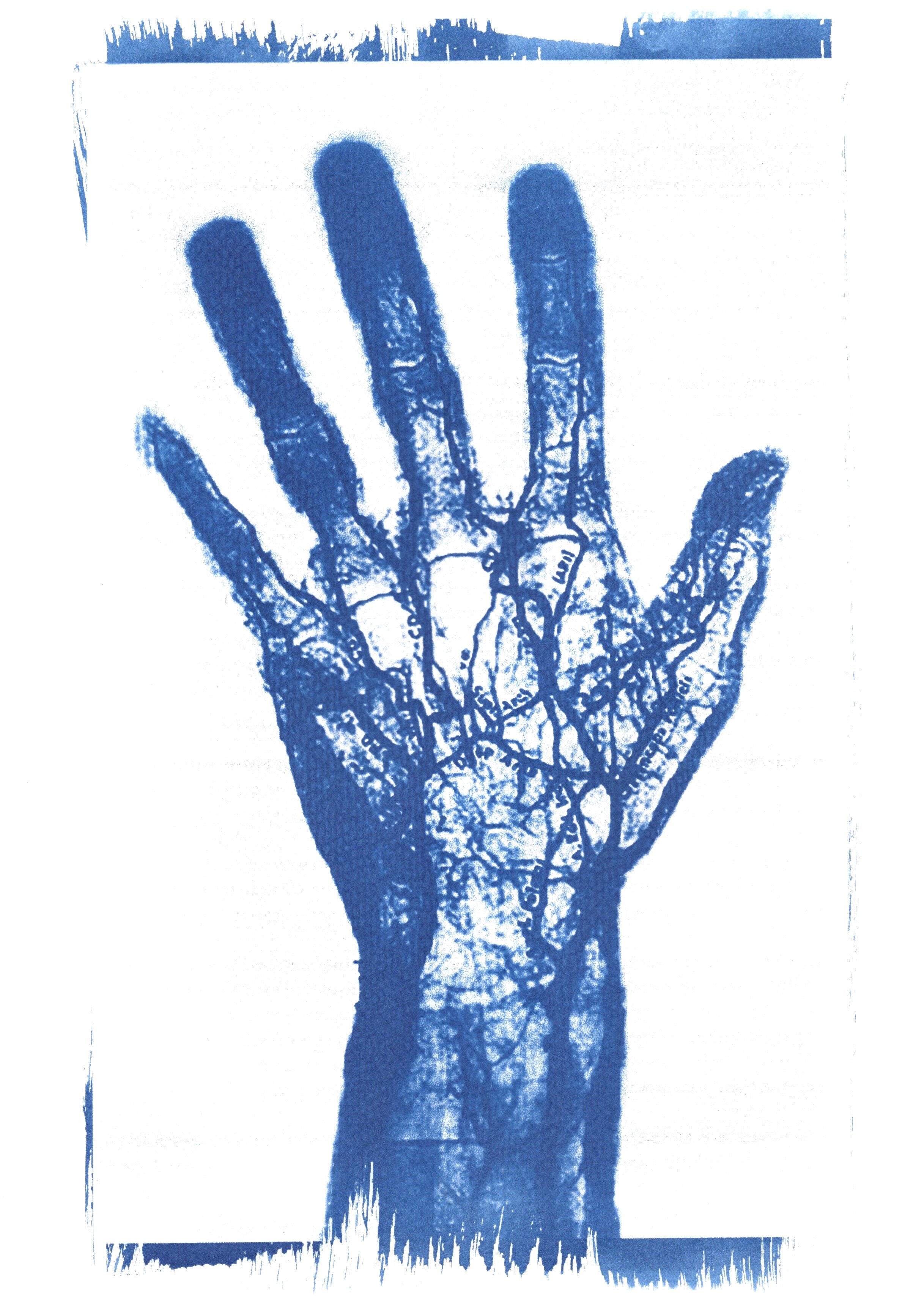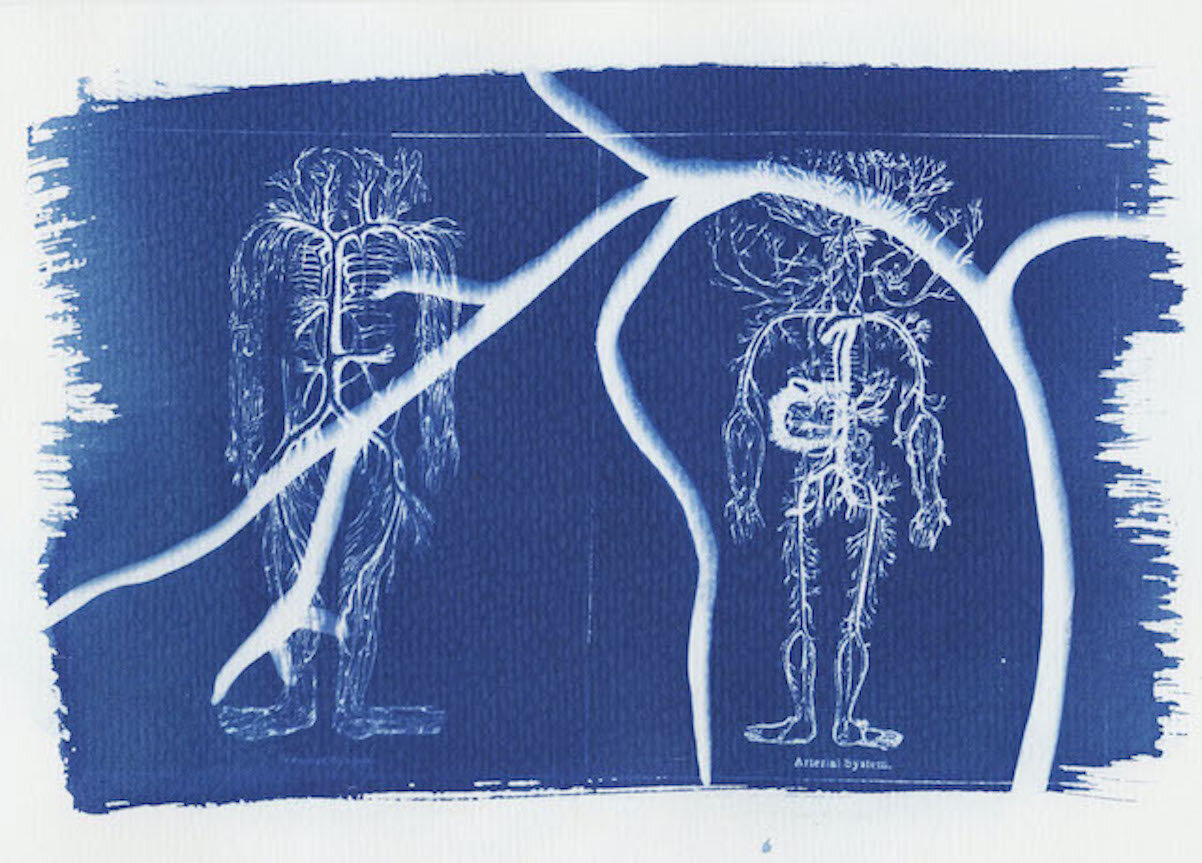Limulus | Talos
2020

Limulus
The Limulus horseshoe crab is a remarkable creature. It has existed in some form for 350 million years and has an adaptation within its’ blue blood that makes it valuable to the biomedical industry. Amoebocytes within their blood clots readily in contact with even the tiniest trace of bacterial endotoxins. From this useful property of their blood, a test known as Limulus Amoebocyte Lysate (LAL) has been developed to test IV drugs, vaccines and many other medical and surgical devices are safe from bacterial contamination. No doubt this keeps us humans safe from potentially dangerous toxins, but the collection and bleeding of horseshoe crabs to produce LAL could threaten this ancient animal.

Horseshoe crab in charcoal & pastel

Talos cyanotype

Horseshoe crab cyanotype
Talos
Limulus | Talos explores the interconnectedness within ecosystems and humankind’s relationship with the natural world. A link was made between the bleeding of horseshoe crabs and Talos, the mythical bronze guardian of Crete. In Greek mythology, ichor was the ethereal fluid that flowed through the veins of the Gods and is described variously as a golden or blue liquid. Considered the earliest description of a robot, Talos was animated by a single vein of precious ichor that ran from his neck to his ankle, stoppered by a bronze bolt. Talos was tricked by the sorceress Medea, who removed the bolt causing the ichor to drain out resulting in his death.
I could see many parallels between the mythical Talos and the horseshoe crab, starting with their bronze, armoured appearance. They both also possess blood with special properties and while Talos guarded Crete against invaders, the horseshoe crab, through its blood provides protection to us against bacterial invaders. While Medea used her wit to outsmart Talos, humans are also able to use our great accumulated knowledge to dominate most species if we choose.
Finally the ichor exsanguinating from Talos links directly to the blood harvesting of horseshoe crabs but also metaphorically to the destructive effect humans have on the natural world when we extract too much.
The following works draws on imagery of horseshoe crabs, blood vessels, Talos from the iconic film Jason and the Argonauts and disintegrating taps as a metaphor extraction leading to destruction.
Cyanotype print of Talos from iconic Harryhausen animation in the 1963 film Jason and the Argonauts

Lockdown
Unable to fire work, I looked for other ways to engage with clay during lockdown. I realised that where the kiln ‘activates’ clay through heat, I could use animation and water to create different kinds of material transformation.
Limulus | Talos
Short non-narrative film
Micro-CT scan of horseshoe crab courtesy of the Virtual Museum of Natural History
Blue Blood
Unlike the hemoglobin in our own blood which contains iron, the oxygen-carrying molecule of horseshoe crabs is hemocyanin, which contains copper and gives the blood its distinctive blue colour.
‘Blue blood’ has historical associations to mean someone of noble birth. The likely origin of the idiom is a direct translation from the Spanish ”Sangre Azul” which was a political metaphor used for Spanish aristocracy. It signified that bloodlines were ‘uncontaminated’ by intermarriage with their Moorish enemies. A nobleman could hold up their sword-arm to display skin so pale that the blueness of their veins showed through.
Surprising connections exist here between the metaphorical use of ‘blue blood’ to mean ‘purity’ of bloodlines to the blue blood of horseshoe crabs being widely used today to test for purity from microbial contamination.

Cyanotypes various








